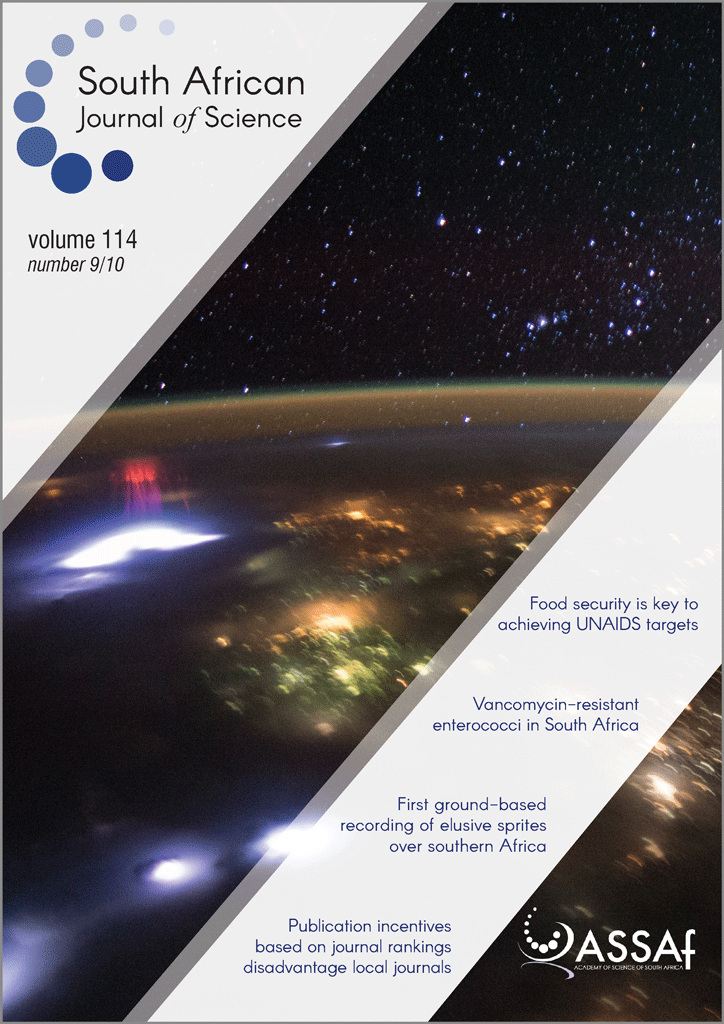Monthly average daily solar radiation simulation in northern KwaZulu-Natal: A physical approach
DOI:
https://doi.org/10.17159/sajs.2018/4452Keywords:
Zululand, simulation, Microsoft Excel, model, estimatesAbstract
Solar energy is a poorly tapped energy source in northern KwaZulu-Natal (South Africa) and many locations in the region have no available measured solar radiation data. Unfortunately, these areas are among the rural, non-commercial farming areas in South Africa that need to harness solar radiation as an alternative energy source for their needs. These communities are mostly disadvantaged and unable to access the currently sophisticated approaches available for the prediction of such data. For this reason, a modelling tool accessible to these communities has been created using data from the South African Sugarcane Research Institute at eight stations in the region. This article presents the physical approach which can be used within readily available resources such as Microsoft Excel to develop a simulation environment that can predict monthly daily average solar radiation at locations. A preliminary model was later customised by considering the physical condition at each individual location. The validated tool provides estimations with a percentage root mean square error (%RMSE) of less than 1% for all locations except for Nkwaleni which had 1.645%. This is an extremely promising estimation process as compared to other methods that achieve estimations with %RMSE of above 10%. The simulation environment developed here is being extended to predict the performance of solar photovoltaic systems in the region. Using data from other sources, the approach is also being extended to other regions in South Africa.
Significance:
- The study modifies the physical approach that is deemed complicated to something that can be accessible to many communities.
- The accuracies achieved with this approach (<0.9%RMSE) in the considered region are commendable.
- The approach can be extended to other regions in South Africa.
Published
Issue
Section
License

All articles are published under a Creative Commons Attribution 4.0 International Licence
Copyright is retained by the authors. Readers are welcome to reproduce, share and adapt the content without permission provided the source is attributed.
Disclaimer: The publisher and editors accept no responsibility for statements made by the authors
How to Cite
- Abstract 937
- PDF 3412
- XML 458
- EPUB 238













.png)